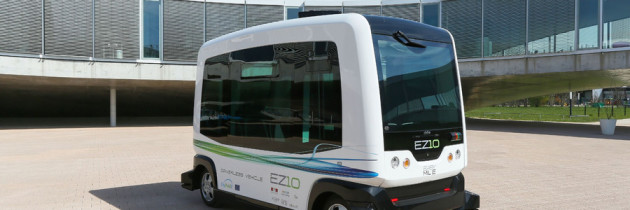The WEpod is the First Driverless Vehicle to Take Public Roads
This article original published on bigthing.com
The WEpod is the next big step in the conversation. It’s a self-driving shuttle that’s taking to the public roads in the Netherlands. This electric shuttle will be driving passengers between the towns of Wageningen and Ede this November (weather and traffic permitting).
The six-passenger shuttle bus WEpod does have a few restrictions. Its max speed will be 15.5 miles per hour and it won’t travel during rush hour, at night, or in bad weather. A control room will be keeping an eye on the vehicle whenever it’s on the road and a number of other technologies, such as cameras, radar, lasers, and GPS, will be monitoring the shuttle and its environment at all times.
If we’re being honest, you’ve probably already entrusted your life to an autonomous vehicle. Ever taken the Rotterdam Rivium shuttle bus, the Heathrow shuttles, or the Masdar pods? Then you’ve ridden in a self-driving vehicle restricted to a fixed track. The entry of autonomous vehicles into our lives won’t be so sudden — it’s going to be filled with baby steps.
The cars will also be restricted to a fixed route, but there are plans to expand to other regions in May 2016, pending good results during this testing phase. At its core the project focuses on developing and sharing knowledge with others in order to achieve a common goal: making autonomous vehicles a reality.
Some are unsettled by the loss of control. Expert Jerry Kaplan calls into question the computational ethics within these autonomous vehicles. He’s not convinced that they’ll be able to make the tough calls in extreme scenarios.
This first entry of a self-driving shuttle onto the public roads shows we may receive autonomous public transportation before we’re able to purchase a self-driving car of our own. Indeed, rewriting any part of society doesn’t happen overnight and this kind of slow expansion of fixed-route autonomous shuttles, growing into a fleet of public transportation options may pave the way to more public acceptance for self-driving vehicles. In this time, researchers will gather more information, collaborate, and hopefully make the streets a better, more efficient place. Baby steps.



